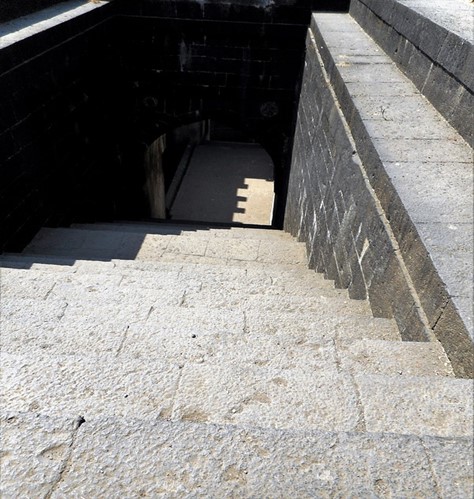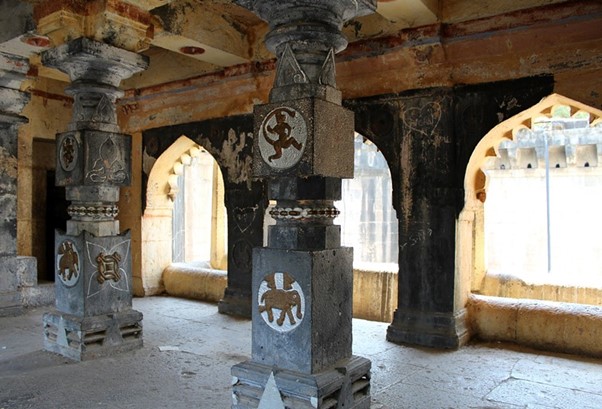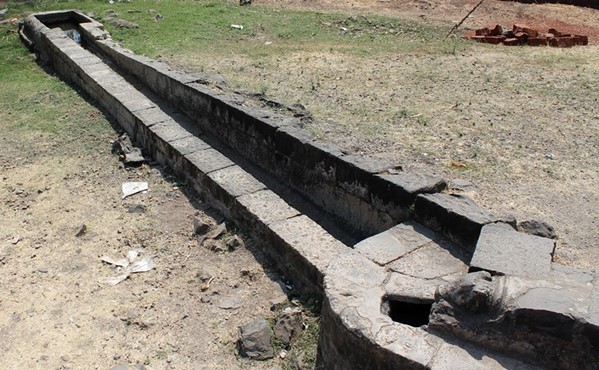The annual droughts in Maharashtra have put tremendous pressure on the available water resources in the state. While the government has not been able to provide adequate, potable water to people in both rural and urban areas, the need to explore other decentralised and localised means of harnessing and conserving water has only got more crucial with time [1].
History provides us with valuable lessons on how to manage and conserve water resources efficiently. Our ancestors had devised a number of techniques to do so and these efforts helped to meet the water needs of not just the people but the livestock and agriculture as well in areas where perennial rivers were absent and the population depended on rains and often faced water scarcity or droughts.
Stepwells are a peculiarity of the states of western India, especially the arid states of Gujarat and Rajasthan. These deep wells, built by the rulers of those times for civic, strategic or philanthropic reasons[2], have steps that reach the water level which make it easier for the people to access water and to maintain them.
The basic idea behind constructing stepwells, locally referred to as vav, vavadi, bawdi, bawri, baoli, and bavadi in Gujarat and Rajasthan [3], was to ensure year-round water supply even during the long dry spells the population had to face for most of the year [4].
Many of these stepwells are intricately carved and are looked upon even today as architectural marvels. They typically have beautiful arches, carved motifs and sometimes, even rooms for rest and recreation. They served many purposes depending on the location. For example, baolis within villages were mainly used for procuring water and for social gatherings while baolis located on trade routes often served as resting places. Stepwells used exclusively for agriculture had drainage systems that channelled water into the fields [2].
Many of these structures, however, are in a dilapidated state now, either ignored by communities and turned into garbage dumps or exploited for their stones or just left around to decay. Current systems of water distribution like taps and pipes have made them seem redundant [4].
Stepwells were also constructed in Maharashtra although they do not seem to be architecturally as elaborate as those found in Gujarat and Rajasthan due to the topography of the region. They are known as baravs in local language and were constructed to supply water perennially for irrigation [5].
A barav in Limb village near Satara in Maharashtra [5] serves as a good example of the ingenuity of our ancestors in constructing water storage structures that not only provided water for irrigation and served as resting places for travellers but was also a meeting place for strategic planning by the rulers of those times [6].
The well can be traced back to the times of the great Maratha ruler Chhatrapati Shahu Maharaj and was constructed around 1719 to 1724 by queen Virubaisaheb Bhosale (Loksatta, December 1, 2016). The well is octagonal in shape and is made to resemble a shiva linga from the top and is popularly known as Bara motachi vihir meaning a well with 12 lifting wheels. It is around 110 feet deep and 50 feet in circumference.
“Limb village, located on the banks of river Krishna, is on a higher elevation than the river. While drinking water was often procured from the river, the well was mainly to meet the irrigation needs as it was difficult to lift water from the river located at a lower level for the fields in the village. The water was used largely for the mango orchards around the area,” says Dr Sachin Joshi, an expert in archaeology and a researcher from Deccan College, Pune.

Elaborate stone steps take us to an entrance that further leads us to the stepwell

The entrance to the well has two sculptures of Sharabhas (creatures with heads and bodies of different animals) in the Hindu mythology. The entrance leads to a bridge with stairs that take us to moat-like structures on either sides of the bridge. As a villager tells us, these were made for accessing the water that filled up even the moats during the rainy season.

The bridge leads to another entrance to the well. The stepwell still has plenty of water from the two underground springs that help to retain water even in the middle of the summer season.

On top of the entrance to the well are beautifully carved arched windows supported on the outside by intricately carved pillars that house a gallery, probably made for housing the royal visitors who would gather for discussions and meetings.

Beautiful and intricate carvings with images of elephants, Lord Hanuman and horsemen adorn the walls of the pillars that support the gallery which also provides a good view of the well.

Another staircase from the gallery takes you to the octagonal terrace.

A throne made of stones on the terrace is another indicator that the royalty could have used the place for official purposes. The peculiar sloping structure in front of the throne and the small holes on the sides of the terrace drained the water during the rains back into the well.

Of the 15 lifting wheels seen on the octagonal well, only 12 were used regularly while the rest were used only when required [6]. Leather bags were used to draw water from the well with the help of bullocks. This water was drained through the narrow connecting channels behind the lifting wheels. The barav irrigated around 40 ha of land perennially [5].

The water drawn by the lifting wheels passed through an intricate system of channels from where it was released to the agricultural lands around.

Narrow, tapering stone channels reach far into the fields ensuring the water was distributed properly. Only one such channel can be seen near the well now.
Many such traditional water harvesting systems can be found in the state and the longevity of the traditional water harvesting structures is proof that they are sustainable technologies [5]. It is important that we learn precious lessons in water conservation from these remnants of history and restore them to make the most of them in these difficult times.













